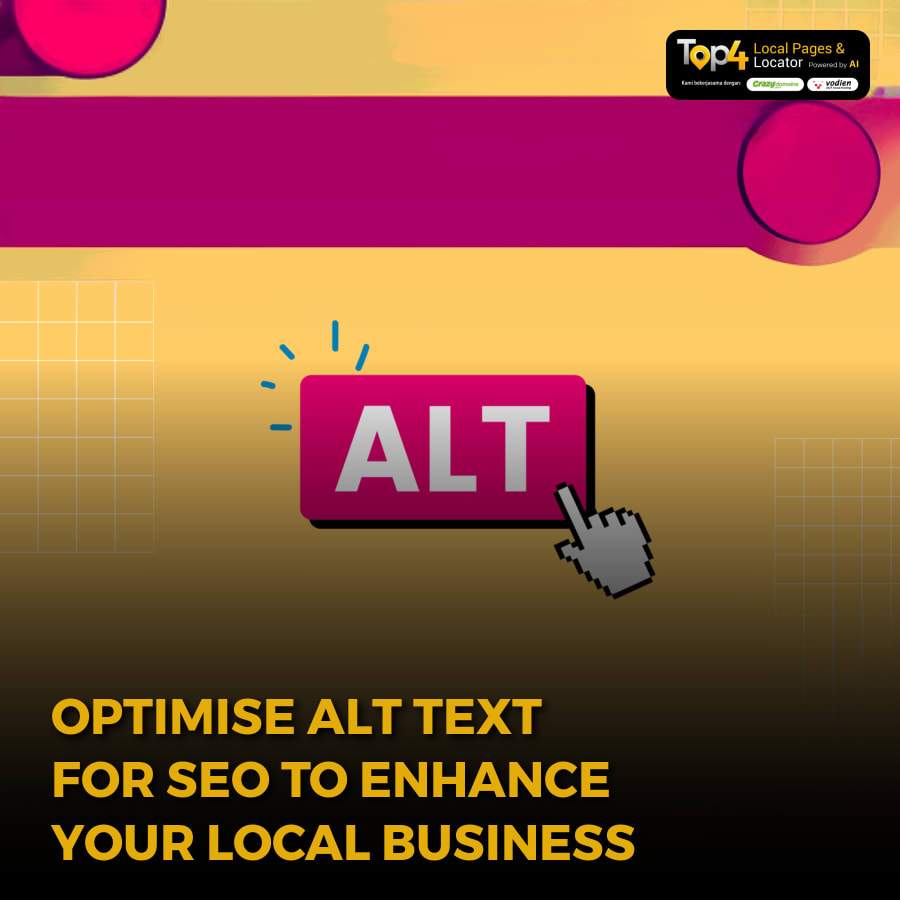Have you ever wondered how to make your website images work harder for your business? With millions of websites competing for attention, ensuring that your content is not only visually appealing but also optimised for search engines is vital. One often-overlooked aspect of this optimisation is the use of alt text. Google has emphasised the importance of alt text, not just for accessibility but as a powerful tool for SEO. It provides context to images, making them more discoverable in search results and improving the overall user experience. For local businesses and franchise owners, this is an opportunity to reach potential customers who might be searching for services just like yours.
Understanding Alt Text and Its Importance for SEO
Alt text, or alternative text, is a brief description of an image that serves multiple purposes. Primarily, it helps screen readers convey what the image contains to visually impaired users, making your site more accessible. However, its role extends beyond accessibility. Alt text contributes to SEO by providing search engines with context about the content of an image.
When search engines crawl your site, they cannot “see” images in the same way humans do. Instead, they rely on alt text to understand the content of an image. By incorporating relevant keywords into your alt text, you increase the likelihood of your images appearing in search results. This can drive additional traffic to your site, especially if you are a local business looking to attract customers in your area.
Best Practices for Writing Effective Alt Text
Creating effective alt text is not merely about adding keywords. Instead, it should focus on providing a clear and concise description of the image. Here are some best practices to follow:
- Be Descriptive: Describe the image as accurately as possible. For instance, instead of saying "dog", you might say "a golden retriever playing in the park".
- Keep It Short: Aim for 125 characters or fewer. This length is generally sufficient to convey the image's purpose without being overly wordy.
- Include Keywords Naturally: Integrate relevant keywords without keyword stuffing. This helps maintain the quality of the description while still making it SEO-friendly.
- Avoid Redundancy: There’s no need to start alt text with "image of" or "picture of." Instead, get straight to the description.
How Google Suggests Using Alt Text for SEO
Google has released guidelines on how to effectively use alt text for SEO. According to their recommendations, the alt text should be informative and relevant to the surrounding content. This means that if an image is related to a specific product or service, the alt text should reflect that relationship. Additionally, Google encourages using alt text for decorative images as well, indicating that even non-informative visuals should have descriptive text.
For local businesses, this means taking the time to assess your images and ensuring that each one has appropriate alt text. For example, if you run a café, your images of food and beverages should include descriptions that highlight their appeal, such as "a steaming cappuccino topped with cocoa powder" or "a freshly baked blueberry muffin." This not only enhances SEO but also entices potential customers who might find your images in search results.
Utilising Alt Text for Local SEO
For local businesses, leveraging alt text can be a game-changer. When you optimise your images with local keywords, such as your city or neighbourhood name, you increase your chances of appearing in local search results. For example, a photography studio in Sydney could use alt text like "family portrait session at Bondi Beach." This not only describes the image but also targets local customers searching for similar services.
Moreover, alt text helps your content rank better in image search results. Many users specifically search for images before making purchasing decisions. By ensuring your images are well-optimised, you can attract a broader audience to your website.
Common Mistakes to Avoid When Writing Alt Text
Even with the best intentions, it’s easy to make mistakes when writing alt text. Here are some common pitfalls to avoid:
- Overloading with Keywords: While it’s important to include keywords, stuffing them into your alt text can do more harm than good. Focus on writing naturally.
- Using Generic Descriptions: Phrases like "image" or "picture" do not add value. Always aim to provide specific information about the image.
- Neglecting Images: Every image on your website should have alt text. Even decorative images can benefit from a brief description.
Testing and Optimising Your Alt Text
After implementing alt text across your site, it’s essential to monitor its impact on your SEO performance. Tools like Google Search Console can help you track how your images are ranking in search results. Pay attention to changes in traffic to your pages and adjust your alt text accordingly. If certain images are underperforming, consider revising the alt text to make it more engaging or relevant.
Conclusion
In today’s digital landscape, every detail matters when it comes to SEO. Alt text is a simple yet powerful tool that can significantly enhance your website’s visibility and user experience. By following best practices for writing alt text, understanding its importance for SEO, and optimising it for local searches, you can create a more accessible and engaging online presence for your business.
At Top4 Marketing, our expertise can help you craft a local marketing plan that aligns with your business goals and local community needs. Let us assist you in maximising your online strategy. Visit Top4 Marketing blog for more insights to elevate your business to new heights. Contact us today and start your journey towards local marketing success.


 SAUDI ARABIA
SAUDI ARABIA

























